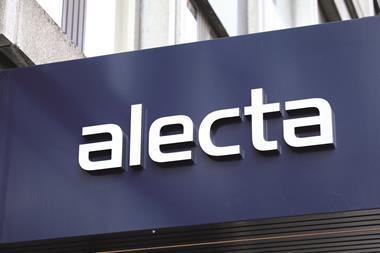Sweden’s AP3 said that when one of the three Stockholm-based national pensions buffer funds – of which it is one – is axed, as has been officially proposed, all of its assets should be passed to just one surviving fund, and not be divided equally between the other two funds as a government report has suggested.
The opinion is part of the SEK499.8bn (€44.36bn) fund’s written response to June’s report from official government investigator Tord Gransbo’s review of Sweden’s system of national buffer funds backing the income pension — the main, pay-as-you-go component of the state pension.
In AP3’s response, which has been published more than a month before the deadline in the consultation of 31 October, the buffer fund said it shared the review’s assessment that consolidating the Stockholm-based buffer funds had greater potential to realise economies of scale than did the alternative suggestion of increasing the mandatory cooperation within the existing organisational buffer fund structure.
“The consolidation proposal also reduces the risk of ambiguities and limitations in the boards’ responsibilities and the CEO’s business management,” it said.
The fund went on to say: “AP3 recommends that when deciding on the consolidation, the capital and operations of the liquidated funds be transferred to one of the remaining Stockholm-based buffer funds, in order to minimise the risks and possible negative consequences of a consolidation.”
AP3 also advocated – in one of its three main opinions in the consultation response – that the board of the fund that receives the assets from the axed fund should be responsible for the implementation of a consolidation and related decisions.
Presenting its arguments as to why the assets should go to just one of the other buffer funds, AP3 said that the single fund receiving the assets would be left “undisturbed” and could focus on its ongoing asset management activities.
Fewer employees and partners would be affected by uncertainty under this option, the fund argued, and there would be fewer operational risks and need for coordination if only two funds were affected.
It also said there would be a shorter time needed for asset transfer, and lower transaction costs, under its proposed solution.
AP3’s suggested solution would lead to a huge difference in the amount of assets each of the two remaining Stockholm buffer funds have – running counter to the original principle when the funds were first organised in their current form, of an equal division of assets between the main buffer funds in the system.
The fund addressed this, by writing: “AP3 considers that the advantages of a consolidation 1:1 instead of 1:2 significantly outweigh the possible disadvantages of reduced comparability and impaired diversification between the funds, as the report highlights.”
AP3 said it supports Gransbo’s proposal that the government decide which of the three Stockholm-based AP buffer funds should be unwound, as well as which fund or funds that liquidated fund should be consolidated into.
Among other points, AP3 said it backed the proposal in the Gransbo review to alter the limits on the buffer funds’ investments in unlisted companies, under which they are not allowed to hold more than a 15% voting share of a firm.
“Regarding holdings in unlisted venture capital companies, AP3 recommends that it should be increased to two-thirds,” the fund said.
Read the digital edition of IPE’s latest magazine



































No comments yet